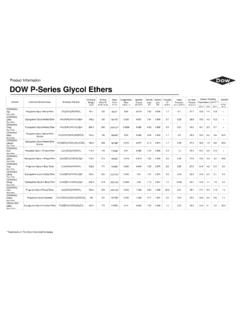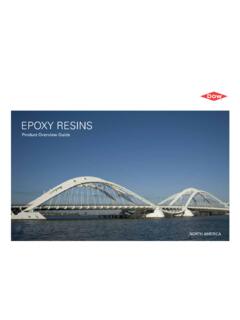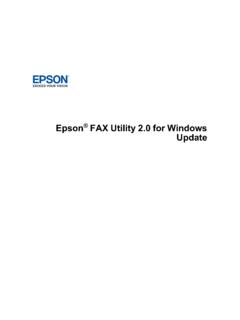Transcription of Guide to Chinese Share Classes - FTSE Russell
1 An LSEG Business August 2022 Guide to Chinese Share Classes FTSE Russell An LSEG Business | Guide to Chinese Share Classes , , August 2022 2 of 8 Guide to Chinese Share Classes Companies incorporated in mainland China and listed in mainland China or Hong Kong can issue different Classes of shares depending on where they are listed and which investors are allowed to own them. The Classes are A, B and H, which are all renminbi-denominated shares that trade in different currencies, depending on where they are listed. Chinese companies incorporated and listed outside mainland China are generally referred to as Red Chips , P Chips , S Chips or N shares depending on their ownership structure, revenue source and listing location. These types of shares may have different definitions among index providers or exchanges; FTSE Russell s definitions for the types of Chinese securities in question are outlined below. Within the FTSE indices, the eligibility of these Share Classes is reviewed annually in September.
2 For the purposes of the annual Russell US index reconstitution in June, China Share class designations will be evaluated based on information available up to the reconstitution rank date. Changes to the Chinese Share Classes assignment resulting from a corporate event may be considered at the time of the event, rather than in line with the annual September review. Share Class Incorporation Location Listing Location Trading Currency Other Requirements Available to mainland Chinese investors Available to International investors A Share Mainland China Mainland China CNY None as they are specific Share Classes issued by the company Yes Yes under QFII/RQFII/ Stock Connect programs B Share Mainland China Mainland China USD (Shanghai) HKD (Shenzhen) Yes, if Investors have appropriate currency accounts) Yes H Share Mainland China Hong Kong HKD Yes, if QDII approved or under Stock Connect programs Yes Red Chip Non-mainland China Hong Kong HKD See notes below Yes, if QDII approved or under Stock Connect programs Yes P Chip Non-mainland China Hong Kong HKD Yes, if QDII approved or under Stock Connect programs Yes S Chip Non-mainland China Singapore SGD Yes, if QDII approved Yes N Share Non-mainland China United States USD Yes, if QDII approved Yes FTSE Russell An LSEG Business | Guide to Chinese Share Classes , , August 2022 3 of 8 A Share A shares are securities of companies incorporated in mainland China that trade on either the Shanghai or Shenzhen stock exchanges and trade in Renminbi ( Chinese Yuan).
3 A shares can only be traded by residents of the People s Republic of China (PRC), or via the Qualified Foreign Institutional Investor (QFII), the Renminbi Qualified Foreign Institutional Investor (RQFII) rules or Stock Connect programs. B Share B shares are securities of companies incorporated in mainland China that trade on either the Shanghai or Shenzhen stock exchanges. They are traded in US dollars on the Shanghai Stock Exchange and Hong Kong dollars on the Shenzhen Stock Exchange. They can be traded by non-residents of the People s Republic of China (PRC) and also residents of the PRC with appropriate foreign currency dealing accounts. H Share H shares are securities of companies incorporated in mainland China that trade on the Hong Kong Stock Exchange. They are traded in Hong Kong dollars. Like other securities trading on the Hong Kong Stock Exchange, there are no restrictions to who can trade H shares . Red Chip A Red Chip is a company incorporated outside of mainland China that trades on the Hong Kong Stock Exchange.
4 Red Chips derive the majority of revenue or assets from the PRC and are substantially owned, directly or indirectly, by mainland China state entities. a) To be assessed as a Red Chip, a company must satisfy the following criteria: The company is incorporated outside of mainland China; and The company is listed on the Hong Kong Stock Exchange; and Over 55 per cent of the revenue or assets# of the company are derived from the PRC; and The actual controller of the company (if available) is a Chinese state entity; or The company is controlled by Chinese state entities, the government, provinces or municipalities, through strategic holdings which, in aggregate, total more than 30 per cent of its voting rights (when there is no actual controller reported). b) An existing Red Chip which fails one or more of the following criteria will cease to be classified as a Red Chip if: The company is no longer incorporated outside of mainland China; or The company is no longer listed on the Hong Kong Stock Exchange; or The percentages of revenue and assets# derived from the PRC have both fallen below 45 per cent; or The actual controller of the company (if available) is not a Chinese state entity; and The aggregate holding of Chinese state entities, the government, provinces or municipalities, through strategic holdings is less than 25 per cent of its voting rights (when there is no actual controller reported).
5 # Please refer to the revenue and asset guidelines section for further information . FTSE Russell An LSEG Business | Guide to Chinese Share Classes , , August 2022 4 of 8 P Chip A P Chip is a company* incorporated outside of mainland China that trades on the Hong Kong Stock Exchange and has a headquarters/principal executive office in mainland China or is established in mainland China with a majority of its revenue or assets derived from the PRC. * Provided that the company does not satisfy FTSE Russell s Red Chip definition. a) To be assessed as a P Chip, a company must satisfy the following criteria: The company is incorporated outside of mainland China; and The company is listed on the Hong Kong Stock Exchange; and Over 55 per cent of the revenue or assets# of the company are derived from the PRC; and The company s establishment and origin demonstrate strong connections to the PRC by satisfying at least one of the criteria below: The company has a stated headquarters or principal executive office in mainland China; or it was established in mainland China; or The company whose headquarters is in Hong Kong, Macau, or Taiwan and derives more than 90 per cent of its revenue from the PRC b) An existing P Chip that fails one or more of the following criteria will cease to be classified as a P Chip: The company is no longer incorporated outside of mainland China; or The company is no longer listed on the Hong Kong Stock Exchange.
6 Or The percentages of revenue and assets# derived from the PRC have both fallen below 45 per cent; or The company no longer has a headquarters or principal executive office in mainland China; or The company whose headquarters is in Hong Kong, Macau or Taiwan and derives less than 80 per cent of its revenue deriving from the PRC; or The company now meets the definition of a Red Chip (see above). c) In cases where the data could support an either a Red Chip or a P Chip assignment, the company will be classified as a Red Chip. # Please refer to the revenue and asset guidelines section for further information . S Chip An S Chip is a company incorporated outside mainland China that trades on the Singapore Stock Exchange and has a headquarters/principal executive office or is established in mainland China, with the majority of its revenue or assets derived from the PRC. a) To be assessed as an S Chip, a company must satisfy the following criteria: The company is incorporated outside of mainland China; and The company is listed on the Singapore Stock Exchange; and Over 55 per cent of the revenue or assets# of the company are derived from the PRC; and The company s establishment and origin demonstrate strong connections to the PRC by satisfying one of the criteria below: The company has a stated headquarters or principal executive office in mainland China; or it was established in mainland China.
7 The company whose headquarters is in Hong Kong, Macau or Taiwan and derives more than 90 per cent of its revenue from the PRC. b) An existing S Chip that fails one or more of the following criteria will cease to be classified as an S Chip if: The company is no longer incorporated outside mainland China; or FTSE Russell An LSEG Business | Guide to Chinese Share Classes , , August 2022 5 of 8 The company is no longer listed on the Singapore Stock Exchange; or The percentages of revenue and assets# derived from the PRC have both fallen below 45 per cent; or The company no longer has a headquarters or principal executive office in mainland China; or The company whose headquarter is in Hong Kong, Macau, or Taiwan and derives less than 80 per cent of its revenue from the PRC. # Please refer to the revenue and asset guidelines section for further information . N Share An N Share is a company incorporated outside of mainland China that trades on the New York Stock Exchange, the NASDAQ Exchange or the NYSE American.
8 An N Share will have a headquarters/principal executive office in mainland China or is established in mainland China, with the majority of its revenue or assets derived from the PRC (only one year s revenue and asset data from the most recent annual report is considered). For the avoidance of doubt: this also applies to the Russell US Indices there will be no two-year averaging of revenue and asset data for the purposes of evaluating whether a company should be designated an N Share ). a) To be assessed as an N Share , a company must satisfy the following criteria: The company is incorporated outside of mainland China; and The company is listed on the New York Stock Exchange, the NASDAQ Exchange or the NYSE American; and Over 55 per cent of the revenue or assets# of the company are derived from the PRC; and The company s establishment and origin demonstrate strong connections to the PRC by satisfying one of the criteria below: The company has a stated headquarters or principal executive office in mainland China; or it was established in mainland China; or The company whose headquarters is in Hong Kong, Macau or Taiwan and derives more than 90 per cent of its revenue from the PRC.
9 B) An existing N Share which fails one or more of the following criteria will cease to be classified as an N Share if: The company is no longer incorporated outside mainland China; or The company is no longer listed on the New York Stock Exchange, the NASDAQ Exchange or the NYSE American; or The percentages of revenue and assets# derived from the PRC have both fallen below 45 per cent; or The company no longer has a headquarters or principal executive office in mainland China; or The company whose headquarters is in Hong Kong, Macau, or Taiwan and has derives less than 80 per cent of its revenue from the PRC # Please refer to the revenue and asset guidelines section for further information . Revenue and Asset Guidelines The revenue and asset screens used when determining Red Chips, P Chips, S Chips and N shares also incorporate and apply the following guidelines: Revenue is defined as sales and other operating revenues prior to other income or cash items ; Assets are defined as non-current (long lived) assets.
10 All other assets are discounted from the evaluation; FTSE Russell An LSEG Business | Guide to Chinese Share Classes , , August 2022 6 of 8 Revenue and asset data are taken from the most recent company filings prior to the annual Share Classes review in September. The data cut-off date for the revenue/asset data used in the annual review is the last business day in June; o For the purposes of the annual Russell US index reconstitution, revenue and asset data available up to the reconstitution rank date will be taken into account when evaluating whether a company should be considered an N Share for the purposes of evaluating potential Russell US index inclusion. Geographic breakdowns of revenues and assets will supersede any written statements, but where breakdowns are not available: o Statements and language such as all or virtually all of the company s revenues reside in PRC or all or virtually all of the assets are derived within PRC , will be viewed as definitive statements and pass the revenue and asset screens.


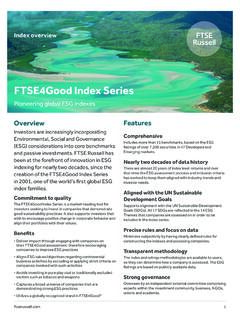


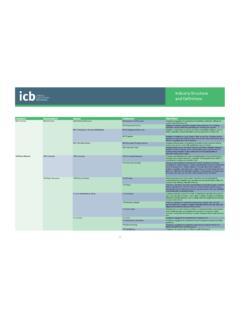

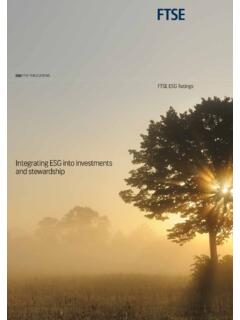
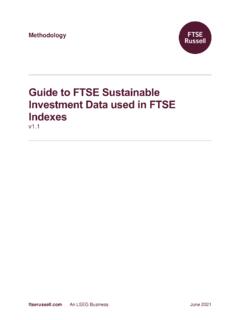
![Membership of the [Committee Name]](/cache/preview/9/9/6/b/7/9/b/9/thumb-996b79b98db3a1f1de093b5160b5ea4d.jpg)

